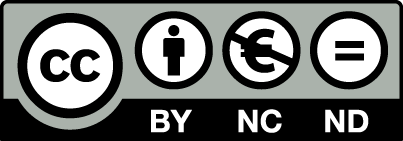Please use this identifier to cite or link to this item:
https://hdl.handle.net/2445/96589| Title: | Clinical anatomy aspects of the arthroscopy and endoscopy in Podiatric procedures (first metatarsophalangeal joint and plantar aponeurosis): a review |
| Author: | Fargues Polo, Betlem |
| Director/Tutor: | Manzanares Céspedes, María Cristina |
| Keywords: | Artroscòpia Malalties del peu Treballs de fi de grau Arthroscopy Foot diseases Bachelor's theses |
| Issue Date: | 8-Jun-2015 |
| Abstract: | Introduction and objectives: Advances in endoscopy, small joint arthroscopy, and instrumentation, have enabled surgeons to treat pathologies affecting the first metatarsophalangeal (MTPJ) and the plantar aponeurosis (PA). The aim of this paper is to study the used portals and its complications trough a systematic literature review, and evaluate the risk of nerve injury of each portal by means of cadaveric dissections. Material and methods: A PubMed, Scopus, Scielo and ScienceDirect search was performed, between September 2014 and May 2015, using the following keywords: “first metatarsophalangeal joint arthroscopy”. A refined search was carried out, using (“first metatarsophalangeal joint” AND “arthroscopy”) AND NOT “hallux valgus”, for first metatarsophalangeal joint arthroscopy and then, using “endoscopic” AND “plantar fasciitis”, and “endoscopic” AND “plantar fascia” for PA endoscopy. An anatomical textbook research was also performed. For the clinical anatomy experiment, ten fresh frozen feet were examined, as described by Golanó et al (2006), to evaluate the risk of nerve injury when establishing portals. Results: A total of 43 articles were selected through the search. The portals used for first metatarsophalangeal joint arthroscopy were the dorsolateral, dorsomedial, the medial and the medial proximal portals. Portals described for managing the plantar fasciosis are the medial and lateral portals. The portal’s complications cited were mainly attributed to lesion of nervous structures, being called neurapraxias. Other complications cited are: portal tenderness, infection, and persistent drainage. Arch collapse or lateral column pain are complications attributed to the plantar fascia release. On the cadaveric study no damage of the nervous structures surrounding the portals was observed, although some terminal branches on the calcaneal region can be minimally damaged. Conclusion: The selected portals reviewed have proven to be safe because no nervous structure was injured when reviewing the anatomo-clinical procedures on the cadaveric study. |
| Note: | Treball Final de Grau de Podologia, Escola Universitària d'Infermeria, Universitat de Barcelona, curs: 2014-2015, Tutor: María Cristina Manzanares Céspedes |
| URI: | https://hdl.handle.net/2445/96589 |
| Appears in Collections: | Treballs Finals de Grau (TFG) - Podologia |
This item is licensed under a
Creative Commons License



